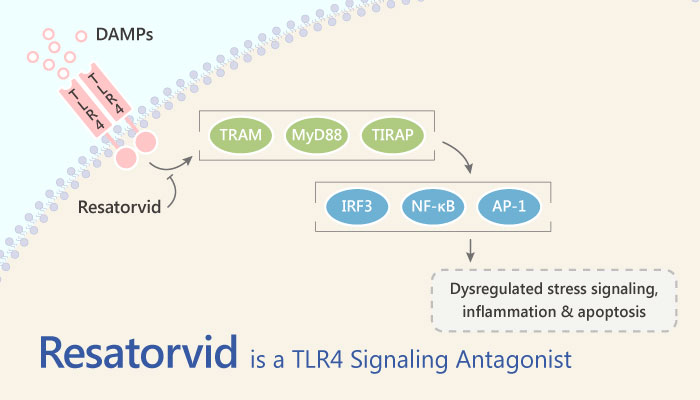Proinflammatory mediators such as cytokines and NO play pivotal roles in various inflammatory diseases. To combat inflammatory diseases successfully, regulation of proinflammatory mediator production would be a critical process. Toll-like receptor 4 is a protein that in humans is encoded by the TLR4 gene. TLR4 is a transmembrane protein, member of the toll-like receptor family which belongs to the pattern recognition receptor (PRR) family. Its activation leads to an intracellular signaling pathway NF-κB and inflammatory cytokine production which is responsible for activating the innate immune system.

In addition, Li et al discovered Resatorvid, a novel small molecule TLR4 signaling inhibitor. In RAW264.7 cells and mouse peritoneal macrophages, it suppressed lipopolysaccharide (LPS)-induced production of NO, tumor necrosis factor-alpha (TNF-alpha), and interleukin (IL)-6. The IC50s are 1.1 to 11 nM. It also suppressed the production of these cytokines from LPS-stimulated human peripheral blood mononuclear cells. The IC50 values are from 11 to 33 nM. It inhibited mRNA expression of IL-6 and TNF-alpha induced by LPS and interferon-gamma in RAW264.7 cells.
However, TAK-242 did not antagonize the binding of LPS to the cells. It is noteworthy that it suppressed the cytokine production induced by Toll-like receptor (TLR) 4 ligands, but not by ligands for TLR2, -3, and -9. In addition, IL-1beta-induced IL-8 production from human PBMCs was not markedly affected by TAK-242. Therefore, these data suggest that TAK-242 suppresses the production of multiple cytokines by selectively inhibiting TLR4 intracellular signaling. Nevertheless, it could be a promising therapeutic agent for inflammatory diseases, whose pathogenesis involves TLR4.